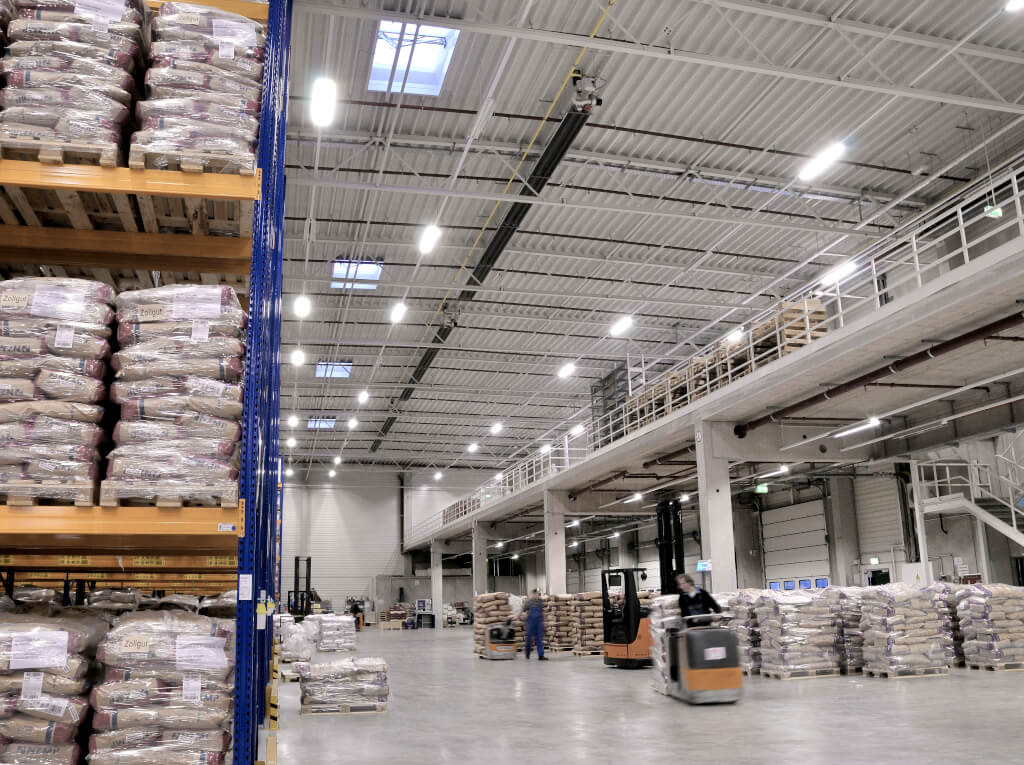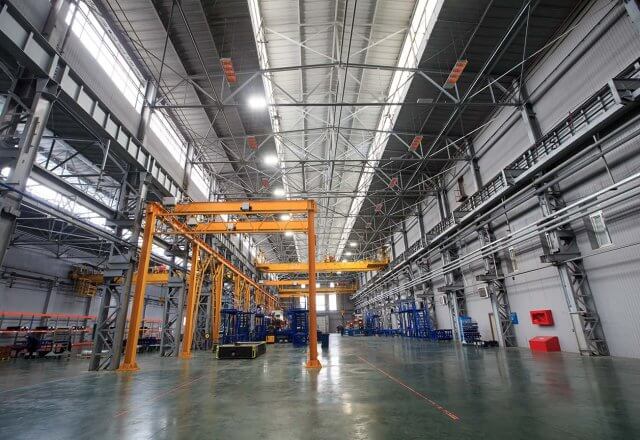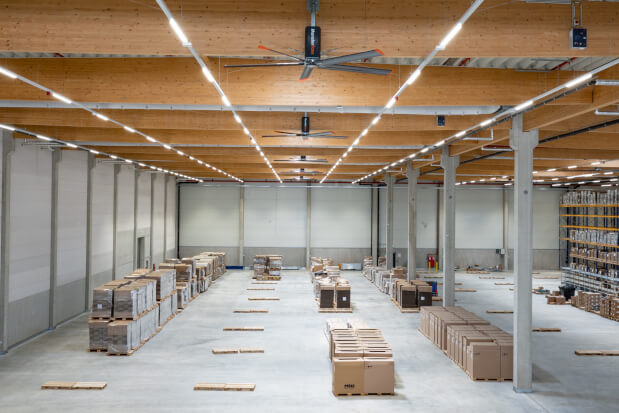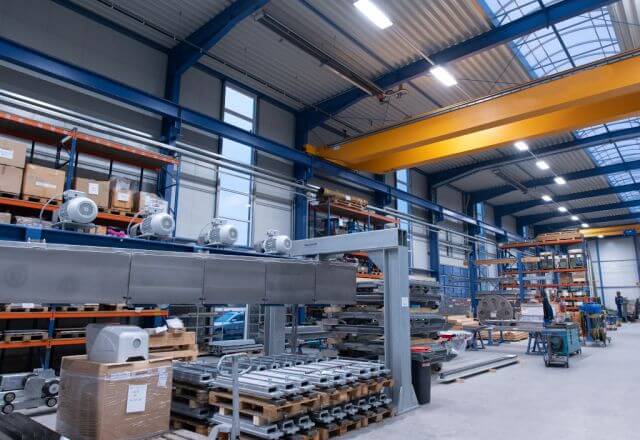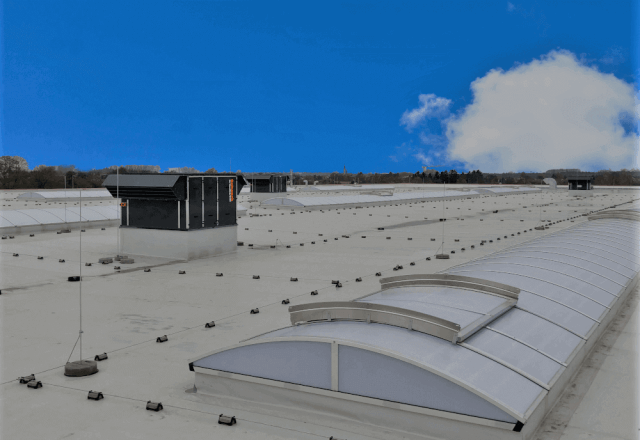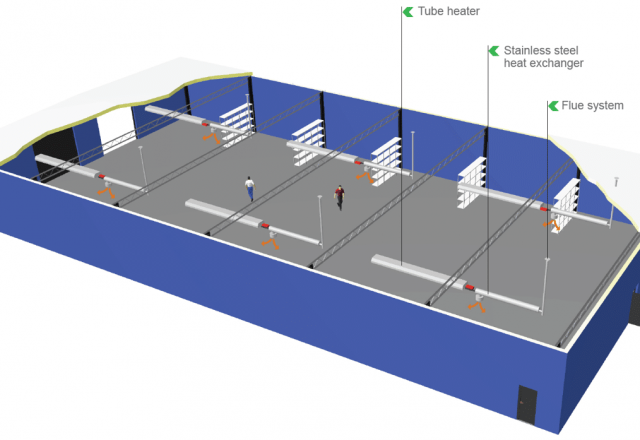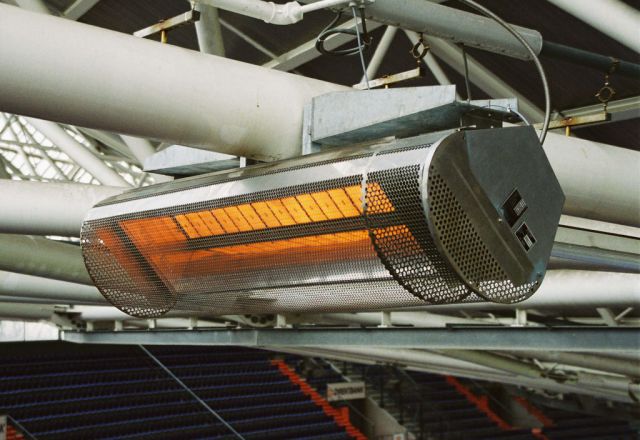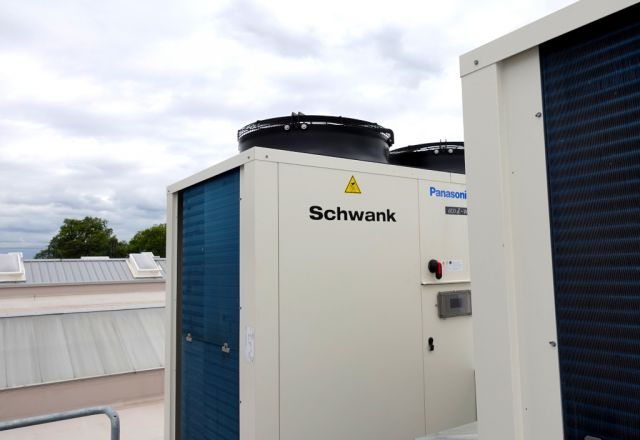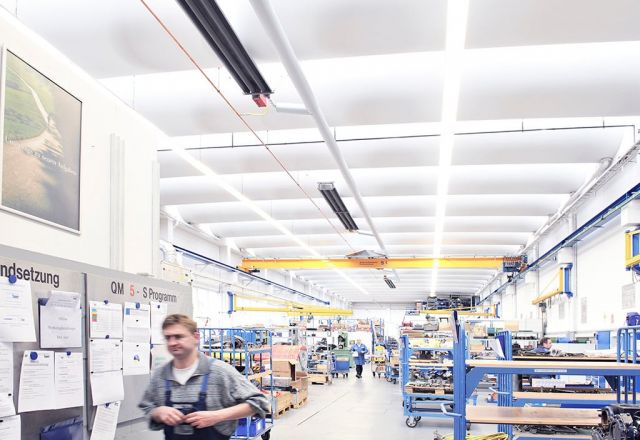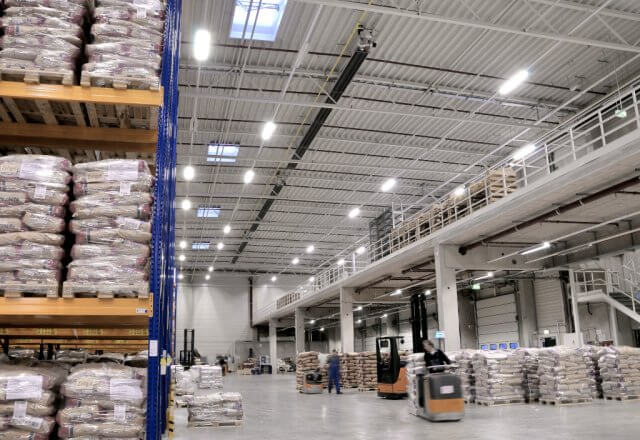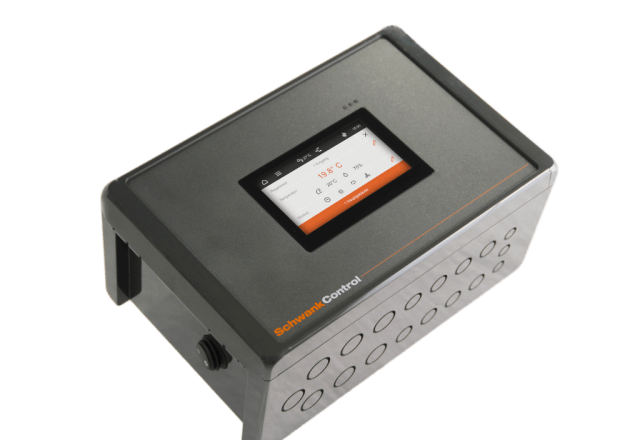Basically, tube heaters can be used almost anywhere where the ceiling height is over 4 metres. However, they are mainly found in workshops, warehouses and production buildings in industry, logistics and also in sports facilities. Radiant tube heaters are mounted beneath the ceiling and provide a pleasant room climate because they do not move air to distribute heat but generate heat with infrared rays. In addition to full heating, tube heaters can also heat individual zones and convince with very short heat-up times. Let’s take a closer look at the technology…
How do tube heaters work?
Tube heaters are infrared radiators whose mode of operation can be compared to the principle of the sun. The infrared radiation or heat radiation of the sun is converted into heat on the surfaces it hits. Also on our skin. The infrared rays do not need a “carrier medium” to transport their energy. Like the sun, whose infrared rays have to travel about 150 million kilometres to reach the earth, the infrared rays of a tube heater reach the occupied area of the employees, machines and stored goods almost without loss from the equipment under the buildings ceiling.
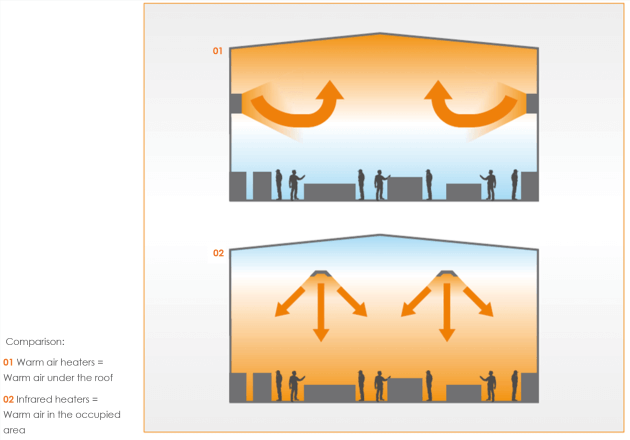
Tube heaters generate heat by burning an oxygen-gas mixture, in closed burners with radiant tubes [drawing]. The combustion is not visible, it takes place in the tube hence the name tube heater. The generated flame and hot gases heat the surface of the radiant tubes, which then emit the heat mainly in the form of radiation. Natural or liquefied gas or biogas is used as fuel, and the first attempts to operate tube heaters with pure hydrogen are currently underway.
How are tube heaters built?
The oppressive fan
Tube heaters are quite simply constructed devices. They have a burner (which is why they belong to the decentralised heating systems), a fan, radiation tubes and reflectors arranged above them. The straight (linear) or U-shaped tube acts as the radiating surface. The burner, which is mounted at one end of the radiant tube, produces a flame that extends into the tube. More modern devices work as so-called “pushing systems”. This means that the fan is located directly in the area of the burner and “pushes” the flame into the radiant tube. This creates a laminar flame that heats the entire length of the radiant tube (Bild 2). There is another fan at the end of the tube used for suction. Here, the fans create a negative pressure that “sucks” the flame and gases through the radiant tube. Disadvantages: The fans and their ball bearings are exposed to the hot exhaust gas and aggressive condensate during the warm-up phase of the units.
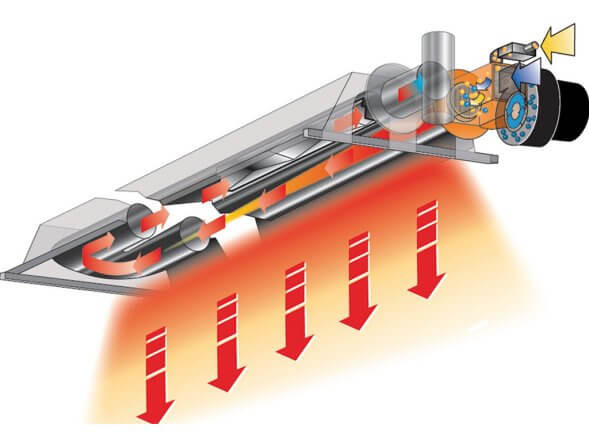
The radiation tube heats up to about 550 to 700 °C, depending on the design. It is covered by a reflector that directs the radiation heat into the desired area. To increase the infrared yield, the reflector plate can be provided with thermal insulation. The flue gases are discharged via individual flues per unit or collective flue systems, in which several units discharge their flue gases in a common flue pipe. If the room air is polluted (for example by vapours), the flue gas stack also serves as a fresh air duct for the burner (Type C – concentric system).
The gas-air compound
The current generation of tube heaters uses a pneumatically controlled gas-air combination that can continuously adjust the unit output in ranges between 40 % and 100 %. This allows heating in partial load operation with consistently high efficiency. In addition to additional energy savings, this also has a positive effect on compliance with the legally required ErP directive. As a guideline, it can be said that tube heaters with gas-air composite burners are on average 30 % more economical than commercially available tube heaters.
Why do infrared radiant heaters or tube heaters heat healthily?
First and foremost, the cosy room climate created by tube heaters is due to the fact that the systems do not have to move air for heating. This means that there are no unpleasant draughts or dust swirls, which is particularly pleasing for allergy sufferers, and incidentally, viruses and germs are not blown around unnecessarily. Because tube heaters primarily heat surfaces and people and only secondarily the air, the air temperature in the hall to be heated can be about three degrees Celsius lower on average. This lower air temperature is nevertheless perceived as comfortable due to the infrared heat.
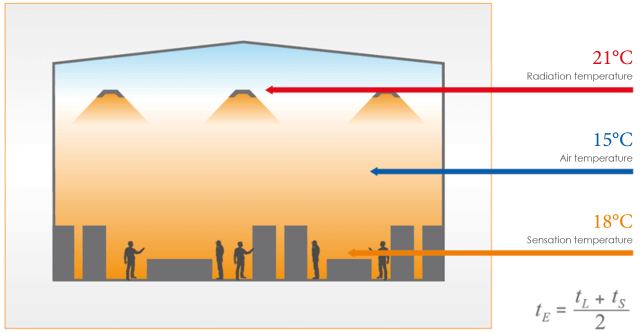
What makes tube heaters so efficient?
Compared to conventional heating systems, tube heaters can save up to 50 % in energy costs. The amount of savings depends on several factors. The building structure and the actual application play an important role. The following applies:
The energy saving with tube heaters increases…
…the higher a building is.
…the worse the building is insulated.
…the higher the air exchange rate in the building (e.g. through constantly open gates during loading or …unloading processes, extraction at machines, etc.).
…if only certain zones or parts of the building are to be heated.
…if the heating is to respond flexibly to changing shift times.
…the colder the average outdoor temperatures are.
But mainly tube heaters save money because of their design principle and the heat transfer by infrared radiation. Because the rule is: what doesn’t need to be heated doesn’t need to be paid for. This refers both to the possibility of leaving buildings areas unheated and to lowering the air temperature. On average, 1°C less air temperature saves 7 % energy. In addition, tube heaters use the primary energy gas, which they convert directly in the unit into thermal energy. Complex boiler systems and the transmission losses of the water pipes of central systems are eliminated.
In addition, an intelligent control system and the possibility of infinitely modulating adjustment of the unit output allow a further 14 % savings in contrast to single-stage controlled tube heaters. Modulating tube heaters, ideally with gas/air combination, can ideally adjust their burner output to the actual heat requirement. For this purpose, the combustion air is regulated in addition to the fuel quantity. In this way, the energetically best combustion and the highest radiation factor (even in partial load operation) can be guaranteed.
Most heating days are during the so-called transitional periods. However, the output of the heating system is designed for peak times – i.e. particularly cold days. Tube heaters, which cannot modulate, virtually always run at full throttle.
Additional savings can be achieved by using insulated and completely closed reflectors with high reflectance. Insulating the reflectors prevents heat loss to the top. The radiation tubes thus become hotter and in turn emit more heat downwards through infrared radiation.
Due to their design, the efficiency of tube heaters increases when….
… the unit can modulate steplessly,
… a gas-air compound burner is used,
… insulated reflectors are used,
… the reflectors are closed all around (also on the head and face side),
… a well-reflecting reflector material is used.
What are the advantages of radiant tube heaters for the user?
However, as everyone knows, there are subtle differences between theory, technical advantages and practice. The heating system must fit the building and its conditions.
Tube heaters are particularly suitable as an industrial heating system if….
… dust swirls are to be avoided,
… certain areas/zones are to be heated individually,
… the building is only used sporadically,
… the building structure is poorly insulated or has many cold bridges,
… the investment costs are to be kept low,
… gates are frequently open or there is a high air exchange rate,
… the building is high,
… condensation on sensitive stored goods (e.g. steel) should be avoided.
Tube heaters are only conditionally suitable for industrial heating if…..
… explosion-protected rooms are to be heated,
… the building is under 4 metres high.
… no natural or liquid gas can be used,
… the minimum distances from the stored goods to the tube radiant heaters cannot be maintained,
… roof or wall loads cannot be complied with due to the weight of the unit.

